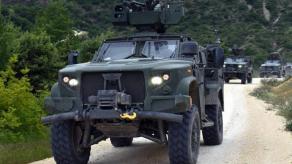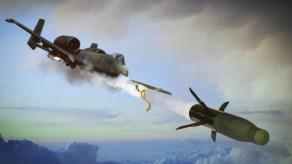Western tanks have officially started to go to the Armed Forces of Ukraine, it's already a fact, since the announcements on the state level from Poland regarding its Leopard 2 and Great Britain about its Challenger 2 have been made. Moreover, according to the Ukrainian foreign minister Kuleba, Ukraine is planning to make an entire new tank brigade with western-supplied vehicles.
The latter, by the way, gives a hint of the quantity of tanks agreed for Ukraine. If we talk about a tank brigade according to AFU standards, then its about 93 vehicles, or three tank battalions with 31 tanks in each.
Read more: Rheinmetall Announced the Stockpiles And the Timelines For the Restoration of Leopard 1, Leopard 2 Tanks, Marder Infantry Fighting Vehicles

If we talk about NATO standards, then it's 84 tanks: two tank battalions with two companies of 14 vehicles (plus an IFV-mounted company) and a mechanized battalion with a single tank company (plus two companies on IFVs).
Quite oftenly we hear the opinion that western tanks are too big and weighty and overall not suitable for Ukrainian war conditions. Indeed, NATO tanks are heavier than the Soviet ones, but its not like they are several times heavier, if we look at Leopard 2, for example.
The Leopard 2A4 weighs 55 tons, and the 2A6 version is 62.5 tons. For comparison, let's take T-64M "Bulat" with its weight of approximately 45 tons; and the heaviest tank in the Armed Forces of Ukraine, the BM "Oplot" has a weight of 51 tons.
Comparing Challenger 2, the difference is more significant. When equipped with additional armor modules, it has a weight of 75 tons, and 64 tons without them. This means, for instance, that Ukrainian forces will need to consider the capabilities of bridges and pontoons when crossing or forcing an obstacle. But such differences are not critical.
As for the dimensions, the gap is not that big either, although Western vehicles are definitely notably taller than Ukrainian ones. The T-64BV at the highest point is 2.17 meters tall, for the Leopard 2 and the Challenger 2 the height is 3 m and 2.49 m respectively.
We can argue a lot about the size of vehicles in the frontal plane, but in fact, such dimensions are essential to provide comfortable conditions for the crew to operate in. Meanwhile in russia, all this Soviet narrative about the big tanks being easy targets eventually ended once "Armata" appeared with its 3.3 meters of height.

For that reason, it is extremely surprising to hear that Western machines are not suitable for the conditions of Ukraine, which is a classic European theater of military operations. It is precisely a type of environment that all Western vehicles, be it Leopard 2, Challenger 2, Abrams or Leclerc, were created in the first place.
A few words on the mentioned automatic loading system: this issue is one of the most controversial. In fact, if it is out of order, which is actually not a very rare occurrence, a Soviet tank simply loses its combat capability. Moreover, this system needs the crew to literally sit on top of ammunition in the vehicle, meanwhile Western tanks are many times less explosive due to the special design of the ammunition stack. And it is much easier to maintain the combat vehicle with a crew of four rather than three.

There is also an opinion that the USSR and the USA had different views on a tank's role on the battlefield. In the Soviet Union, a tank was a "universal fighter" suitable to destroy enemy tanks and infantry. Meanwhile in the West, a tank is first of all a mobile anti-tank weapon.
Definitely, in the 1980s Cold War concept, a NATO tank had the primary task of fighting enemy tanks. However, a lot has changed since then. Particularly speaking, full-fledged anti-personnel ammunition for Abrams appeared in the early 2000s, and it was already the M1028 canister shot that proved very effective; this round was as good for demolishing fortifications.

But what actually makes a conceptual difference between a tank in Alliance states and in the "Soviet worldview" was demonstrated at the Strong Europe Tank Challenge competition, in which Ukrainian tank crews participated, too.
This challenge included key elements of what NATO countries were seeing as a tank's main tasks. And it turned out that the capabilities of modernized Soviet vehicles were completely out of place and could not complete these tasks effectively.
For example, reverse slope shooting is usually done better by Western tanks due to wider angles of gun laying. This aspect is more than important because it allows to expose the turret alone and furthermore at such an angle that makes a hit even less impactful.

Or there is an issue regarding the Soviet tanks not being able to retreat in reverse gear without exposing the rear side of the vehicle. Another element that was new to Ukrainian tank crews at that time was the artillery adjustment task. While a NATO tank can provide decent reconnaissance thanks to its potent sighting systems.
In other words, there is no critical difference between Western and Soviet tanks. It's just that Western school vehicles have more diverse capabilities laid in their foundation during development. Moreover, all of them were designed and modernized with the idea in mind that these tanks must be more effective than the Soviet ones in particular.
Read more: British Tank Challenger 2: Unique Features, Capabilities and Specifications














